
Musical Soundalike of the Day, 4/29/2024
Something I’m trying since I’ve been having trouble keeping up in this blog, first a piece of music that sounds like a cross between previously-written pieces.
+
=
Let me know if the videos don’t work.

Something I’m trying since I’ve been having trouble keeping up in this blog, first a piece of music that sounds like a cross between previously-written pieces.
Let me know if the videos don’t work.

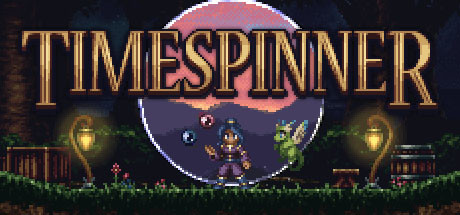
The year 2011 saw the founding of the videogame developer and publisher Chucklefish Limited in London, specializing in producing retro-styled games. Among their publications, developed by Lunar Ray Games, was the Metroidvania Timespinner, taking heavy inspiration from Konami’s Castlevania: Symphony of the Night and financed through the crowdfunding platform Kickstarter in June 2014. It was initially to be released in November 2015. However, the project’s scope led to delays to September 2018, initially on computer and PlayStation-based media, but it would expand to the Nintendo Switch and Xbox One.
As the game’s moniker implies, Timespinner’s narrative focuses on time travel, with protagonist Lunais, a Time Messenger, needing to traverse the present and the past to defeat the evil Lachiem Empire responsible for the death of her parents. The story has a few derivative elements and a point where I had to reference the internet to find out how to advance. However, the way the game tells it is surprisingly effective and never feels forced down the player’s throat, as with most top-tier titles. Many documents add nicely to the game’s background, with a slight hint of LGBTQ+ themes and multiple endings that add some lasting appeal.
Akin to the godfather of the Metroidvania genre, Timespinner features 2-D side-scrolling gameplay. Luna can equip a Main Orb and a Sub Orb, between which she alternates when attacking; a Spell Necklace that allows her to charge and execute magic; and a Passive Ring that allows for continuous skills, such as a pair of blades swirling about her and attacking foes. She also eventually accesses Familiars, who do their own thing and attack enemies, leveling occasionally. Killing enemies may drop items, some of which are necessary to complete sidequests, with Lunais herself occasionally leveling as well, getting money from both defeated foes and breaking light sources.
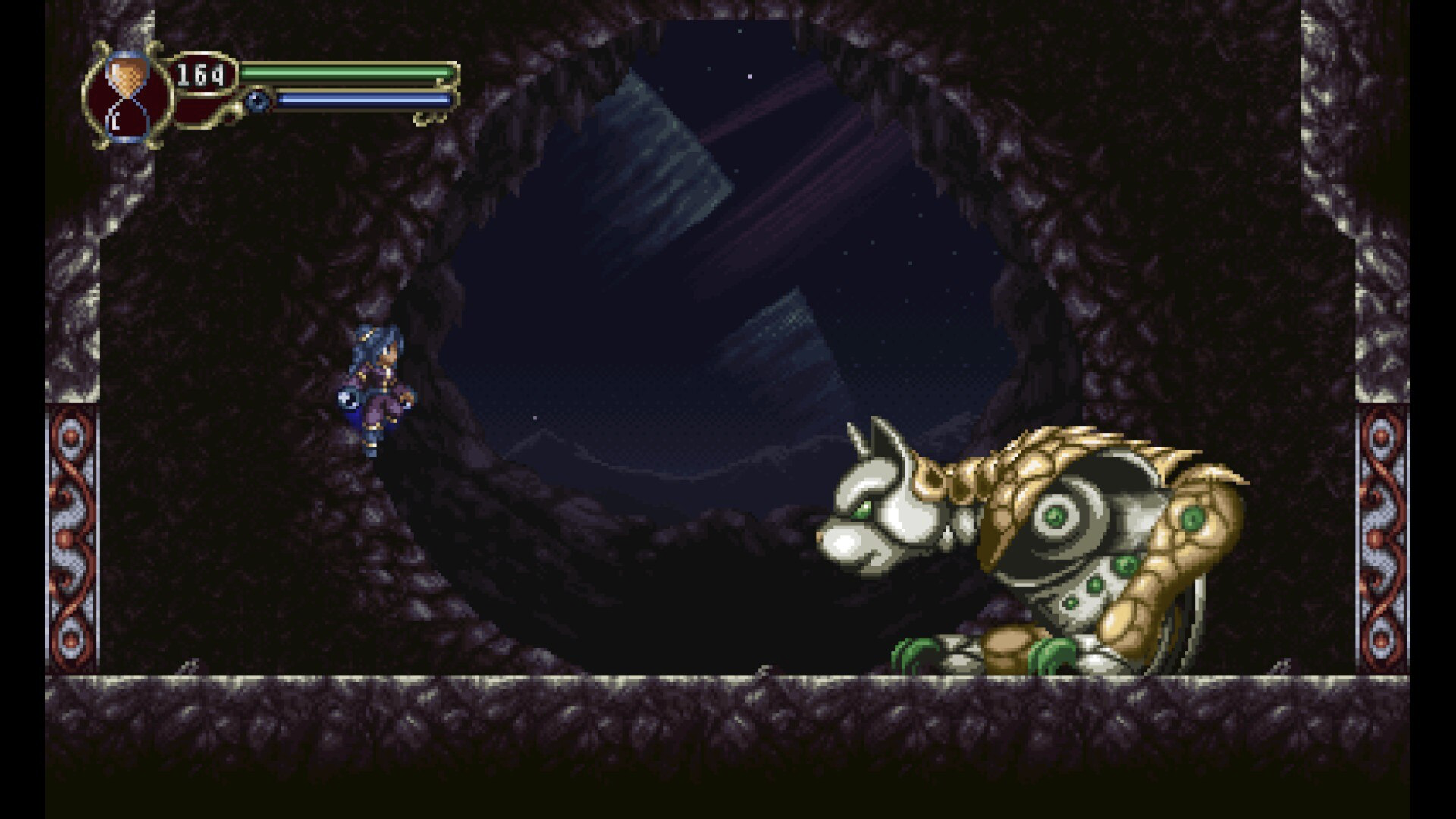
Throughout the past and present, Lunais can also find items that permanently increase her health, aura, and sand, the last of which she can use to freeze time temporarily, often necessary to use enemies as platforms to reach higher areas. Lunais can further equip headgear, a piece of armor, and two accessories; she can also purchase various items from shops. She may further find items that can level her orbs, with repeated use doing the same. The game mechanics are virtually flawless, aside from knockback endemic to most Metroidvanias (which can lead to situations like being forced to different chambers), with occasional bosses impeding Lunais’ progress, the Dream Mode difficulty allowing her to avoid death and fully heal when she reaches zero health.
Control also serves the game well, with easily navigable menus, enjoyable exploration, helpful in-game maps where players can place markers of different colors, and pleasant platforming. While one could argue that, in difficulties above Dream Mode, the player can waste progress if killed far from restorative save points, a buyable item allows Lunais to teleport to the last safe zone, which is helpful when she’s close to death. However, there are issues like the lack of a suspend save (which I could have sworn was in other game versions I played) and poor direction (in which case I had to reference the internet). Regardless, Timespinner interfaces with players like a dream.
Jeff Ball provides a soundtrack stylistically like that of the Castlevania series, with good use of instruments such as the piano and harpsichord. Tracks like “Masquerade of Hedonists” sound like they came straight out of the iconic Konami series (and could easily pass as being written by Mozart), with other pieces like ”The Broken”, the first boss battle theme, evoking a similar feel. Some voice clips include Lunais’ grunting when attacking and occasional laughter. The sound effects are also good, and while there are some silent portions, namely most cutscenes, Timespinner is very much an aural delight.
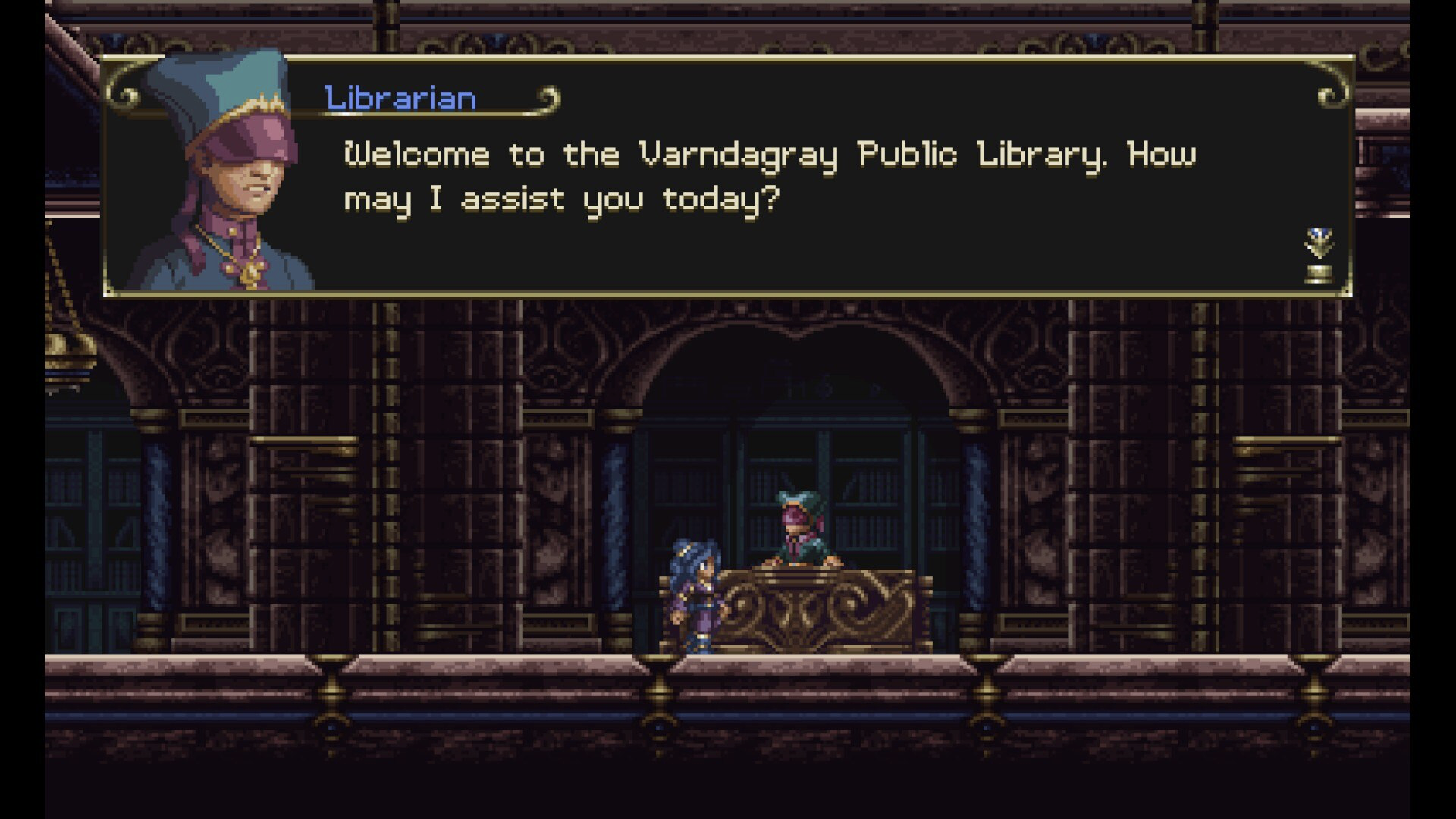
The visuals also evoke Timespinner’s Castlevania inspirations, with gorgeous pixel art, character portraits prominent during dialogues, enemy designs, colorful environments, and smooth animation. There are a few reskins in terms of foes, the sprites mostly don’t show emotion, and equipment doesn’t affect Lunais’ appearance, but otherwise, the game graphically excels.
Finally, finishing the core game can take as little as three hours. However, there is a plentiful lasting appeal in the form of a New Game+, multiple endings (many of which one can view within the same playthrough, and the ending credits become skippable after being viewed once), completely mapping every area, fully leveling Lunais, completing the game compendia, in-game Feats, Steam Achievements, and so forth, so absolute completion can naturally take far longer.
Overall, Timespinner is easily one of the high points of the Metroidvania gaming genre, given its superb gameplay, tight control, engaging narrative, excellent soundtrack, gorgeous graphics, and abundance of side content, surpassing others in terms of quality. While there are negligible flaws in aspects like control and the visuals, and one may argue that it lacks quantity, it quickly makes up for in terms of quality. The supplemental content will also appease those who habitually complain about short games. I enjoyed the various times I played through the game, and I very much look forward to its forthcoming sequel whenever it is eventually released, if ever.
This review is based on a single playthrough on Dream Mode of around eight hours on a Steam Deck of a digital copy purchased by the reviewer, with multiple endings viewed, and 7/37 Steam Achievements acquired.
| Score Breakdown | |
|---|---|
| The Good | The Bad |
| Superb Metroidvania mechanics. Excellent lore and narrative. Solid audiovisual presentation. Plenty of lasting appeal. | Typical Metroidvania knockback. Easy to get lost at times. Some derivative story elements. A lot of reskinned enemies. |
| The Bottom Line | |
| A crowning achievement among Metroidvanias. | |
| Platform | Steam |
| Game Mechanics | 9.5/10 |
| Control | 9.0/10 |
| Story | 9.0/10 |
| Aurals | 9.5/10 |
| Visuals | 8.5/10 |
| Lasting Appeal | 10/10 |
| Difficulty | Adjustable |
| Playtime | 3-48+ Hours |
| Overall: 9.5/10 | |

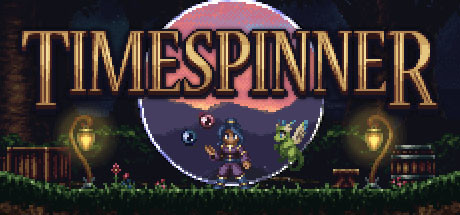
Did some more exploration and quests, but got lost and had to reference the internet since I forgot to check a skeleton in an area I had visited to get a keycard necessary to advance.
When playing my Steam Deck portably, I can take screenshots just fine, but for some reason still not with my controller on TV…


Continuing to plow along. Beat some bosses. Explored some previous areas I was unable to access. Finished a few quests. Love how the game tracks if enemies have drops you haven’t gotten yet.
Asked about my screenshot-taking issues with my Steam Deck, but haven’t gotten a response yet.


I’m playing this on Steam now (and played it two times before, on PlayStation 4 and Vita) since there’s a sequel forthcoming, and I have really fond memories of the game, in my opinion one of the best Western Metroidvanias. Also one of the best Western RPG soundtracks of all time, and Jeff Ball really does a nice job mimicing the style of JRPG music (with the Castlevania series seeming to have been his biggeest inspiration).
Here are some screens from my first hour with the game.
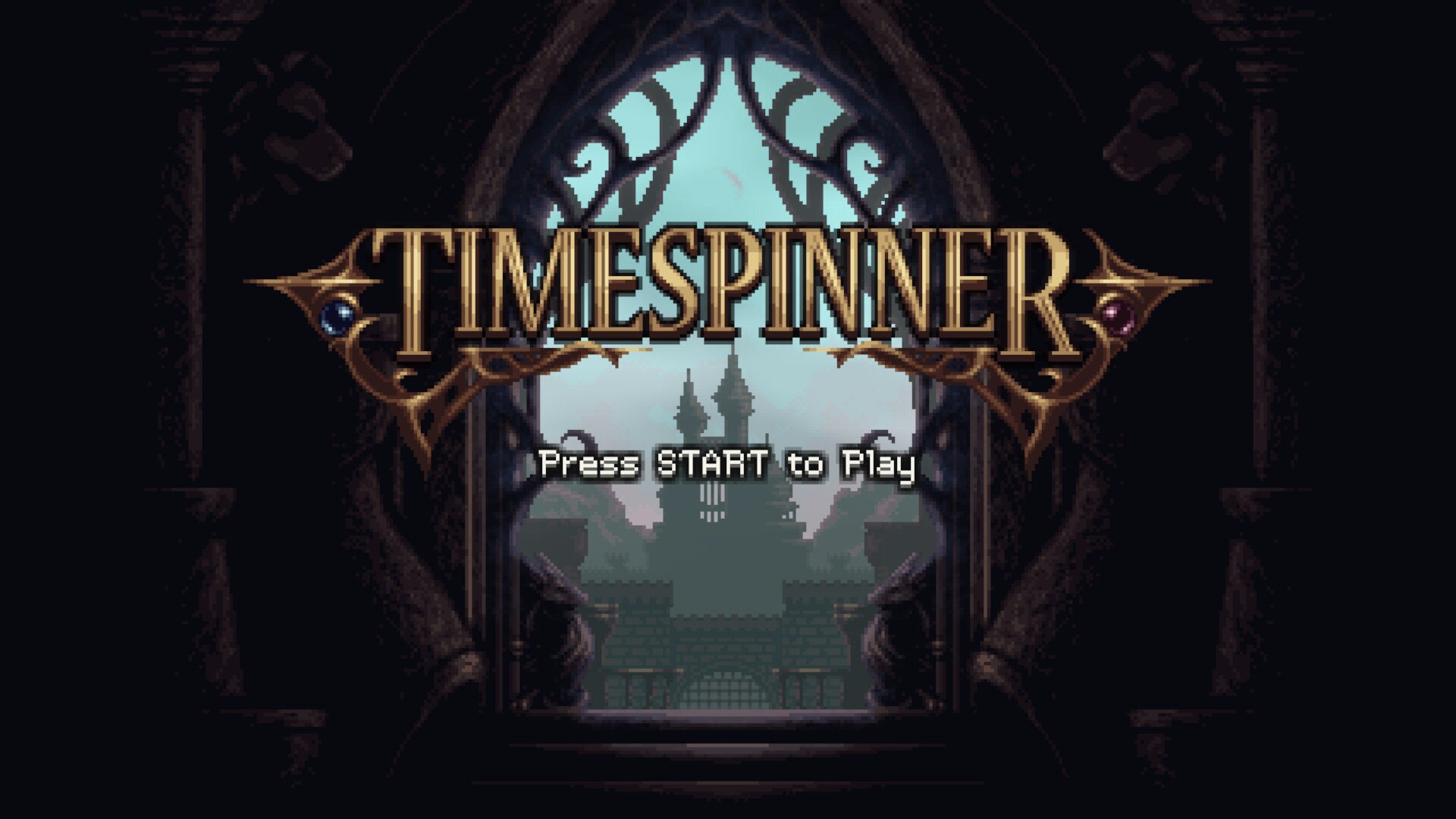




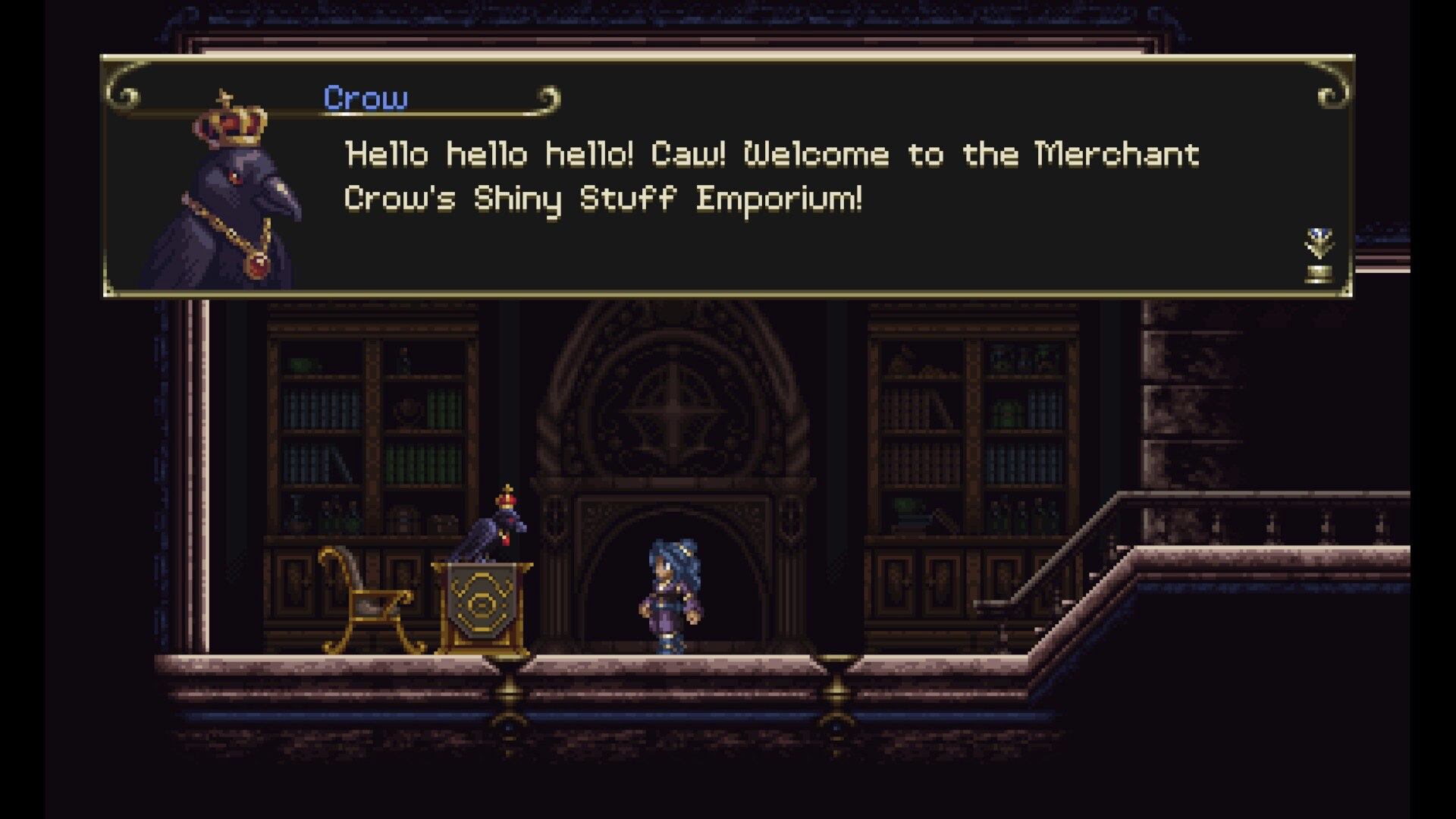
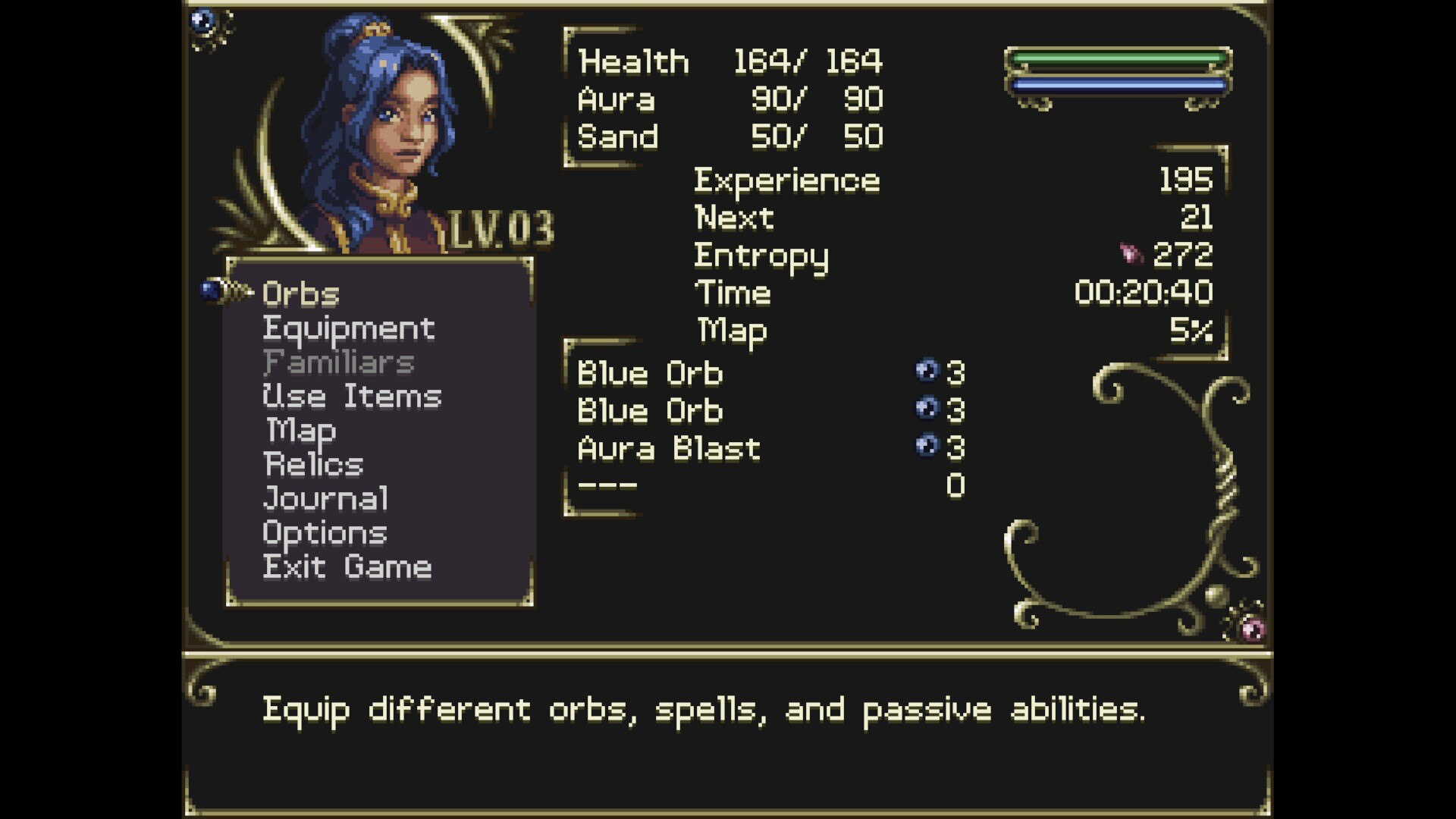
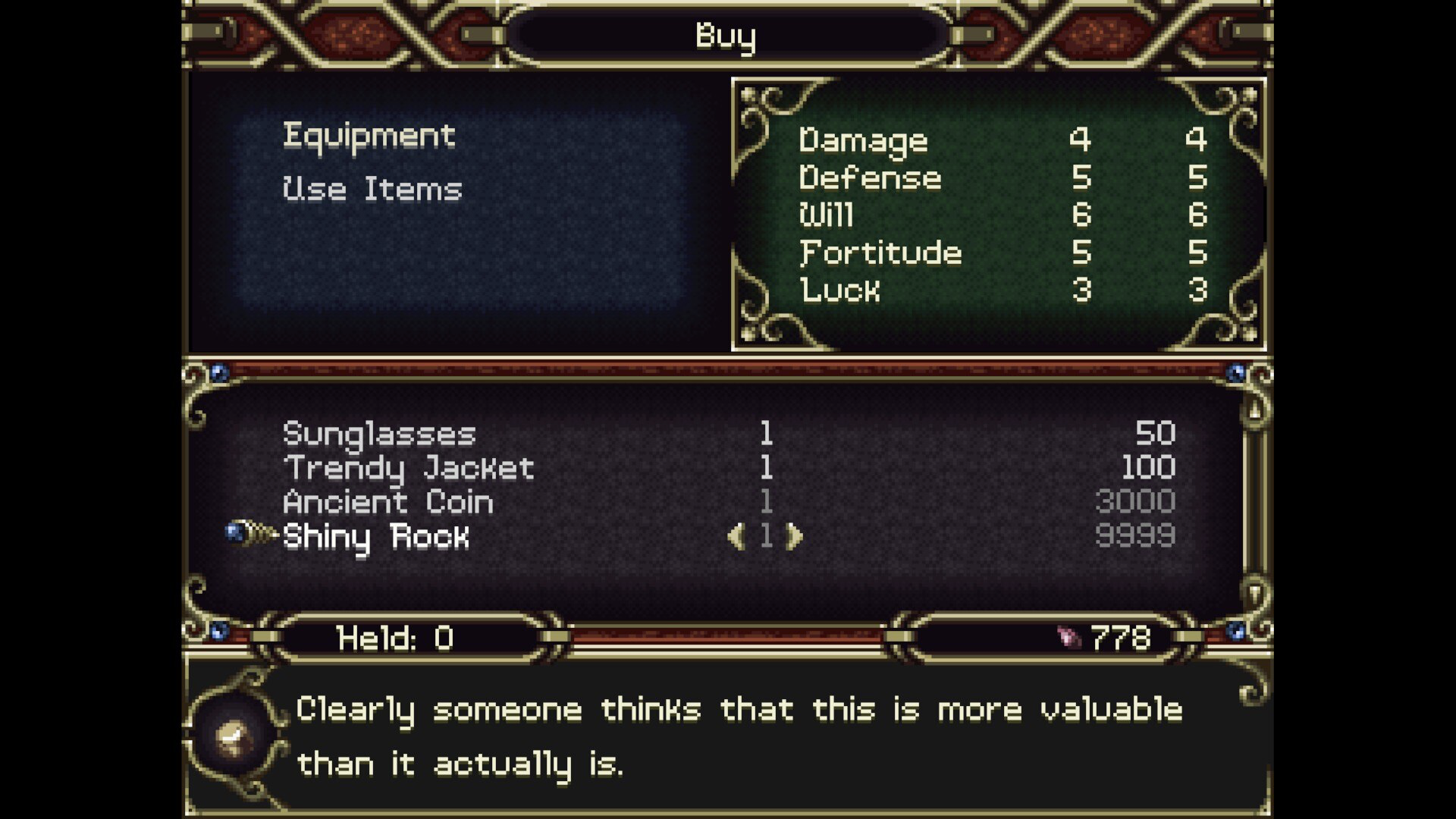
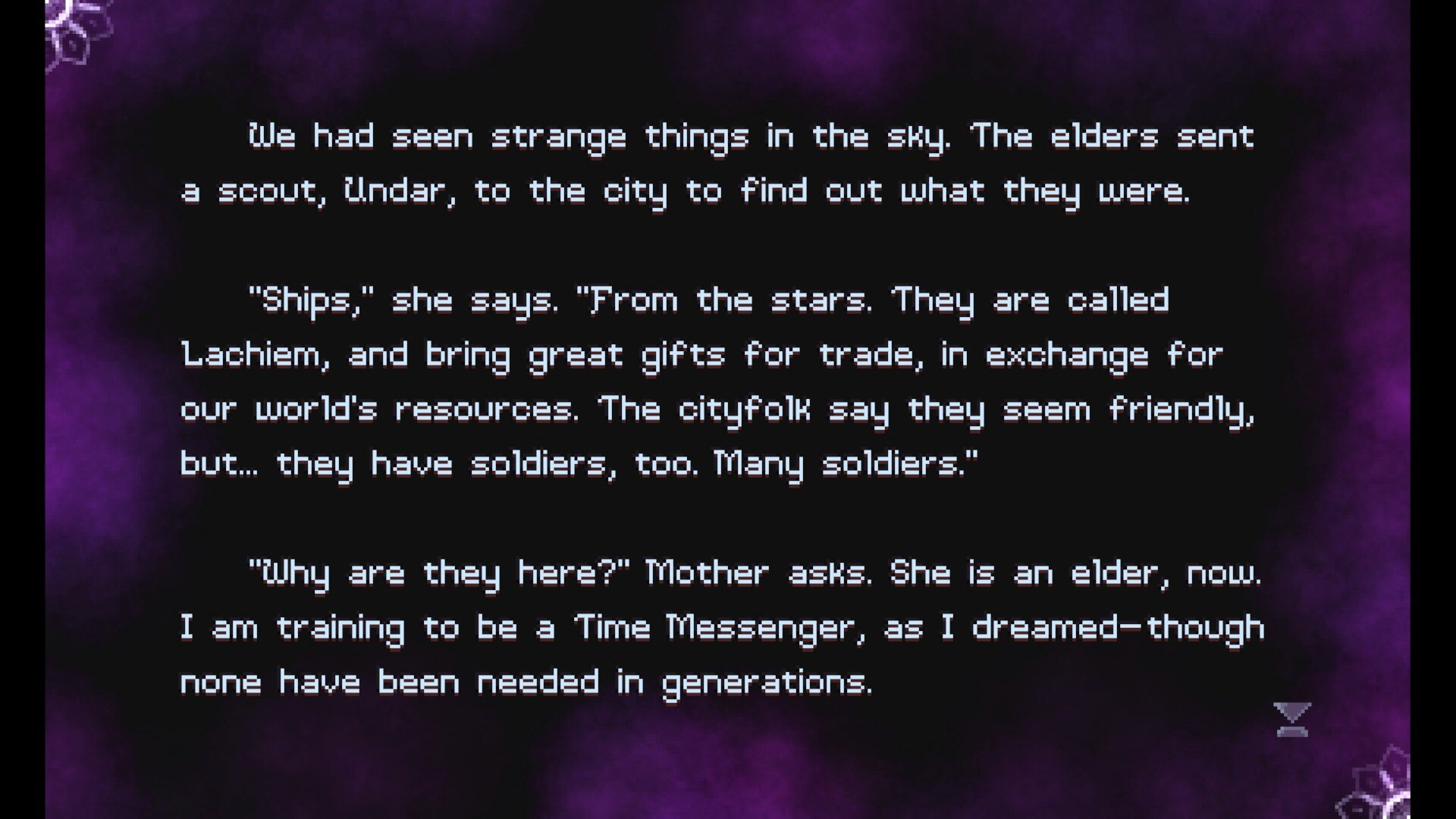

Did some more class grinding in Traveller’s Tablet worlds before returning to the past Nottagen to finish the final quest. Maribel has left my party, replaced by Aishe, whom I made a Warrior since she has some ranks for that class. The Hero is a Priest, Ruff an Armamentalist, and Sir Mervyn a Sage. Maribel was a Jester before she left.
Beat this baby. Expect a review eventually.

Got the Mysterious Fragment from the present-day Sullk Tower, and gave one of the monster-obtained Traveller’s Tablets dungeons a shot. Despite the enemies in one being super-weak, battles with them still count towards vocation advancement. The Hero is still a Gladiator, Maribel finallymastered Mage and is now a Sage, while Ruff is still a Drake slime and Sir Mervyn a Malevolantern. Doing the second part of Nottagen’s past right now.
I’m at the start of Gaia, with Feena back in my party. The end is near…
I’m at Gröndal in the past, after visiting the town. Ruff is getting close to mastering the Sailor class, but the hero and Maribel haven’t gotten any further in theirs. Maybe in the next dungeon…
Working my way through the Tower of Temptation and have gotten some of the money within it.
Completed the Likeness of the Great Evil dungeon. Mastered Thief class for Ruff and now have him as a Sailor, one star from mastery. Ironically, the hero is still a Warrior and Maribel a Priest, and haven’t ranked up at all, probably because Ruff is a few levels lower than they are and is not subjected to the threshold of enemy power. Ah well.
Working through the Tower of Temptation, and got all the first-floor treasures.

When Nintendo’s latest portable system was the Nintendo DS, Square-Enix announced a remake of the Zenithian trilogy of the Dragon Quest series, comprising the fourth through sixth installments, with North American release announced for all three, as the franchise had somewhat been experiencing a golden age outside Japan with the success of Journey of the Cursed King. However, unlike Cursed King, the rereleases of the fourth and fifth games, because of invisible advertising, didn’t sell as well, leaving the fate of the sixth and final Zenithian Dragon Quest in the air. Eventually, Nintendo took charge of localization and reannounced the trilogy’s conclusion as Dragon Quest VI: Realms of Revelation, but it kept its original English subtitle, The Realms of Reverie, in Europe. The title saw a port to iOS devices, with an experience on par with the rest of the series.
Combat is turn-based and randomly encountered, with the sixth installment following the tried turn-based tradition of the player inputting various commands for their characters and letting them and the enemy beat up one another in a round. Turn order can be inconsistent as in other entries, and the escape option doesn’t always work, with a few instances of accidentally tapping it when guaranteed not to work, like against bosses. While exploring the overworld, the player can swap party members out from their carriage, an option sometimes available in some dungeons when the player’s carriage comes along. As in prior Zenithian Dragon Quests, AI options are available for all characters except the protagonist, which can work well depending on the situation. Victory nets all living participants, including those not in the party, experience to level occasionally, money, and maybe an item. Death results in the player being transported to the last church with only the hero alive and his allies dead, with early-game revival expenses potentially burdensome.
Eventually, the player accesses the job system, each with their strengths and weaknesses, with a certain number of battles with enemies on par with the player’s levels or any in the Dark World necessary to advance, acquire new skills that become permanent parts of a character’s skill set regardless of occupation, and ultimately master skills, with higher-level careers available depending upon base classes mastered. Despite many powerful free skills, the game is no cakewalk, especially the main final boss. There is some early-game hell as well, like the initial revival spell failing half the time, and things such as skills on the part of the player and enemy affect all one at a time, which can drag out fights where the player has their carriage present. The game mechanics have many positives, but the archaic elements from previous series entries can spoil things.
As usual, moreover, interaction leaves room for improvement. The menus are superficially clean, but shopping for equipment and items is troublesome, given the countless confirmations, alongside the taxing nature of saving the game, the unavailability of the quicksave in dungeons, and a general poor direction on how to advance the main storyline or where to go next. Dungeons don’t have maps, either; a map for the underwater version of the lower world would have also been welcome, given its numerous points of interest. Hopefully, one day, the franchise will abandon these archaic traditions.
The story is enjoyable for a Dragon Quest game, focusing on two parallel worlds and a conflict between the playable characters and a villain named Murdaw. All characters have a story behind them, and the various subplots are detailed. However, the game is frequently unclear on how to advance the central storyline. Some plot beats, as well, are derivative, such as amnesia and a higher power behind everything. The localization is top-notch, with a hurricane of puns characteristic of contemporary translations of the series, with maybe some minor odd lines such as the ever-present “But the enemies are too stunned to move!” Even so, the narrative is a significant driving factor.
Composer Koichi Sugiyama, as usual, does a superb job with the soundtrack, with every track being enjoyable. However, some silence abounds, and the battle sounds are still dated.
The sixth entry utilizes the same graphical style as its Nintendo DS predecessors. The sprites and scenery look nice, despite pixilation, and fluidly animated enemies designed by Akira Toriyama dazzle in battle. However, many foes are reskinned, and the perspective of combat remains in first-person, like classic series entries. Camera rotation during exploration isn’t always available, which would have been handy given a plot quest where the player must tail a non-player character without being caught. The visuals aren’t an eyesore but show their age.
Finally, playtime ranges from twenty-four to forty-eight hours, depending upon how much grinding of levels and classes the player needs to make it through the game. Some lasting appeal exists in mastering all character classes, not to mention a post-game dungeon. However, there are no plot variations or achievements, and most players will likely want to move to other games.
In summation, Dragon Quest VI hits many positive notes, particularly with its solid class system, enjoyable narrative with polished translation, and superb soundtrack. However, many aspects leave room for improvement, including the occasional difficulty of spikes throughout the main quest, the retention of the franchise’s archaic traditions that affect combat and control adversely, the frequent poor direction on how to advance the main storyline, the questionable quicksave feature, and the dated visuals. Those who have enjoyed other games in the franchise will likely be able to look beyond its flaws. Furthermore, since the story doesn’t have much connection to other games in the series beyond its trilogy, those unversed in the franchise may find this port a decent romp.
This review is based on a playthrough to the standard ending with no postgame content attempted.
| Score Breakdown | |
|---|---|
| The Good | The Bad |
| Great class system. Enjoyable story and translation Excellent soundtrack. | Retains franchise’s archaic elements. Poor direction on where to go next. Graphics show their age. |
| The Bottom Line | |
| Typical Dragon Quest. | |
| Platform | iOS |
| Game Mechanics | 5.5/10 |
| Control | 5.0/10 |
| Story | 9.0/10 |
| Localization | 9.5/10 |
| Aurals | 9.5/10 |
| Visuals | 6.5/10 |
| Lasting Appeal | 5.0/10 |
| Difficulty | Moderate to Hard |
| Playtime | 24-48 Hours |
| Overall: 7.0/10 | |